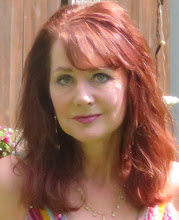I love museums, especially ones that focus on history. There's something incredible about looking at the bones of someone who lived hundreds of years ago and seeing the everyday objects that they used during their lifetime. This photo is the reconstruction of the grave of a early Scottish warrior.
He might have been Pictish, although that was the name given to the early people of Scotland by the Romans and we don't know what they actually called themselves. The Picts fascinate me, perhaps because we know so little about them. They were clearly a distinct people with a distinct language, as in 735, the monk Bede refers to four languages spoken in Britain at the time: British, Scottish, Pictish and English.
Recently researchers have begun to explore the idea that the images and symbols the Picts left behind may actually represent this language. Here's a link to a site that explores this fascinating new perspective on the Picts: http://news.discovery.com/history/ancient-scotland-written-language.htm It would be wonderful is some day were able to decipher Pictish.
Like other Celtic tribes, the Picts used knotwork designs. Knotwork never fails to affect me. I love how it reflects the interconnectedness of all things and the eternal circle of life.
Irish artistic designs clearly influenced this brooch found in Scotland. In early times, the connections between Scotland and Ireland were probably much stronger than the connections between Scotland and the rest of Britain, as travel and transport by sea was much easier than by land. (I'm not sure it isn't still that way after two weeks of driving in Scotland and Ireland!) No one took more advantage of that fact than the Norse, whose influence on Scotland was profound.
To be continued...
Monday, October 20, 2014
Subscribe to:
Post Comments (Atom)









No comments:
Post a Comment